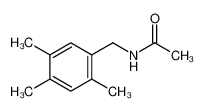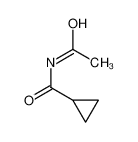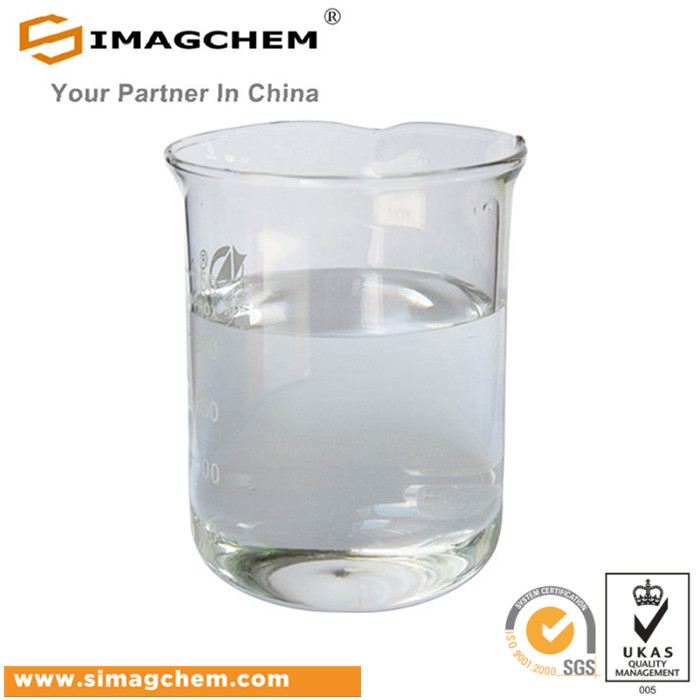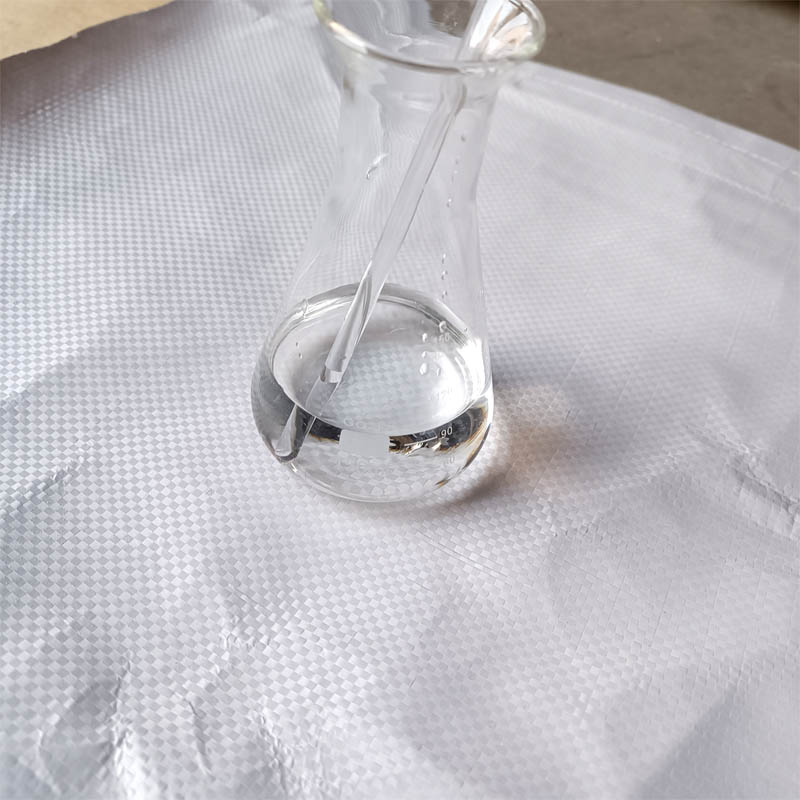1.Identification
1.1 GHS Product identifier
| Product name | acetonitrile |
|---|
1.2 Other means of identification
| Product number | - |
|---|---|
| Other names | Acetonitrile |
1.3 Recommended use of the chemical and restrictions on use
| Identified uses | For industry use only. Acetonitrile is predominantly used as a solvent in the manufacture of pharmaceuticals, for spinning fibers and for casting and molding of plastic materials, in lithium batteries, for the extraction of fatty acids from animal and vegetable oils, and in chemical laboratories for the detection of materials such as pesticide residues. Acetonitrile is also used in dyeing textiles and in coating compositions as a stabilizer for chlorinated solvents and in perfume production as a chemical intermediate. |
|---|---|
| Uses advised against | no data available |
1.4 Supplier's details
| Company | MOLBASE (Shanghai) Biotechnology Co., Ltd. |
|---|---|
| Address | Floor 4 & 5, Building 12, No. 1001 North Qinzhou Road, Xuhui District, Shanghai, China |
| Telephone | +86(21)64956998 |
| Fax | +86(21)54365166 |
1.5 Emergency phone number
| Emergency phone number | +86-400-6021-666 |
|---|---|
| Service hours | Monday to Friday, 9am-5pm (Standard time zone: UTC/GMT +8 hours). |
2.Hazard identification
2.1 Classification of the substance or mixture
Flammable liquids, Category 2
Acute toxicity - Oral, Category 4
Acute toxicity - Dermal, Category 4
Eye irritation, Category 2
Acute toxicity - Inhalation, Category 4
2.2 GHS label elements, including precautionary statements
| Pictogram(s) |   |
|---|---|
| Signal word | Danger |
| Hazard statement(s) | H225 Highly flammable liquid and vapour H302 Harmful if swallowed H312 Harmful in contact with skin H319 Causes serious eye irritation H332 Harmful if inhaled |
| Precautionary statement(s) | |
| Prevention | P210 Keep away from heat, hot surfaces, sparks, open flames and other ignition sources. No smoking. P233 Keep container tightly closed. P240 Ground and bond container and receiving equipment. P241 Use explosion-proof [electrical/ventilating/lighting/...] equipment. P242 Use non-sparking tools. P243 Take action to prevent static discharges. P280 Wear protective gloves/protective clothing/eye protection/face protection. P264 Wash ... thoroughly after handling. P270 Do not eat, drink or smoke when using this product. P261 Avoid breathing dust/fume/gas/mist/vapours/spray. P271 Use only outdoors or in a well-ventilated area. |
| Response | P303+P361+P353 IF ON SKIN (or hair): Take off immediately all contaminated clothing. Rinse skin with water [or shower]. P370+P378 In case of fire: Use ... to extinguish. P301+P312 IF SWALLOWED: Call a POISON CENTER/doctor/…if you feel unwell. P330 Rinse mouth. P302+P352 IF ON SKIN: Wash with plenty of water/... P312 Call a POISON CENTER/doctor/…if you feel unwell. P321 Specific treatment (see ... on this label). P362+P364 Take off contaminated clothing and wash it before reuse. P305+P351+P338 IF IN EYES: Rinse cautiously with water for several minutes. Remove contact lenses, if present and easy to do. Continue rinsing. P337+P313 If eye irritation persists: Get medical advice/attention. P304+P340 IF INHALED: Remove person to fresh air and keep comfortable for breathing. |
| Storage | P403+P235 Store in a well-ventilated place. Keep cool. |
| Disposal | P501 Dispose of contents/container to ... |
2.3 Other hazards which do not result in classification
none
3.Composition/information on ingredients
3.1 Substances
| Chemical name | Common names and synonyms | CAS number | EC number | Concentration |
|---|---|---|---|---|
| acetonitrile | acetonitrile | 75-05-8 | none | 100% |
4.First-aid measures
4.1 Description of necessary first-aid measures
General advice
Consult a physician. Show this safety data sheet to the doctor in attendance.
If inhaled
Fresh air, rest. Artificial respiration may be needed. No mouth-to-mouth artificial respiration. Refer immediately for medical attention. See Notes.
In case of skin contact
Remove contaminated clothes. Rinse skin with plenty of water or shower. Refer for medical attention .
In case of eye contact
Rinse with plenty of water (remove contact lenses if easily possible). Refer immediately for medical attention.
If swallowed
Rinse mouth. Give one or two glasses of water to drink. Do NOT induce vomiting. Refer immediately for medical attention.
4.2 Most important symptoms/effects, acute and delayed
Exposure to 160 ppm for 4 hours causes flushing of the face and a feeling of constriction in the chest; 500 ppm for brief periods is irritating to the nose and throat. Severe exposures cause irritability, skin eruptions, confusion, delirium, convulsions, paralysis, and death due to central nervous system depression. (USCG, 1999)
4.3 Indication of immediate medical attention and special treatment needed, if necessary
Immediate first aid: Ensure that adequate decontamination has been carried out. If patient is not breathing, start artificial respiration, preferably with a demand-valve resuscitator, bog-valve-mask device, or pocket mask, as trained. Perform CPR if necessary. Immediately flush contaminated eyes with gently flowing water. Do not induce vomiting. If vomiting occurs, lean patient forward or place on left side (head-down position, if possible) to maintain an open airway and prevent aspiration. Keep patient quiet and maintain normal body temperature. Obtain medical attention. /Cyanide and related compounds/
5.Fire-fighting measures
5.1 Extinguishing media
Suitable extinguishing media
Foam, carbon dioxide, dry chemical
5.2 Specific hazards arising from the chemical
Special Hazards of Combustion Products: Toxic vapors are generated when heated Behavior in Fire: Vapor heavier than air and may travel a considerable distance to a source of ignition and flash back. (USCG, 1999)
5.3 Special protective actions for fire-fighters
Wear self-contained breathing apparatus for firefighting if necessary.
6.Accidental release measures
6.1 Personal precautions, protective equipment and emergency procedures
Use personal protective equipment. Avoid dust formation. Avoid breathing vapours, mist or gas. Ensure adequate ventilation. Evacuate personnel to safe areas. Avoid breathing dust. For personal protection see section 8.
6.2 Environmental precautions
Consult an expert! Personal protection: complete protective clothing including self-contained breathing apparatus. Ventilation. Remove all ignition sources. Collect leaking and spilled liquid in sealable containers as far as possible. Absorb remaining liquid in dry sand or inert absorbent. Then store and dispose of according to local regulations.
6.3 Methods and materials for containment and cleaning up
ACCIDENTAL RELEASE MEASURES. Personal precautions, protective equipment and emergency procedures: Use personal protective equipment. Avoid breathing vapours, mist or gas. Ensure adequate ventilation. Remove all sources of ignition. Evacuate personnel to safe areas. Beware of vapours accumulating to form explosive concentrations. Vapours can accumulate in low areas.; Environmental precautions: Prevent further leakage or spillage if safe to do so. Do not let product enter drains.; Methods and materials for containment and cleaning up: Contain spillage, and then collect with an electrically protected vacuum cleaner or by wet-brushing and place in container for disposal according to local regulations.
7.Handling and storage
7.1 Precautions for safe handling
Avoid contact with skin and eyes. Avoid formation of dust and aerosols. Avoid exposure - obtain special instructions before use.Provide appropriate exhaust ventilation at places where dust is formed. For precautions see section 2.2.
7.2 Conditions for safe storage, including any incompatibilities
Fireproof. Keep in a well-ventilated room. Separated from acids, bases, strong oxidants and food and feedstuffs. Well closed.Protect containers against physical damage. Outdoor or detached storage is preferable. Separate from any sources of ignition and combustible materials. Storage room should be well-ventilated.
8.Exposure controls/personal protection
8.1 Control parameters
Occupational Exposure limit values
Recommended Exposure Limit: 10-hour Time-Weighted Average: 20 ppm (34 mg/cu m)
Biological limit values
no data available
8.2 Appropriate engineering controls
Handle in accordance with good industrial hygiene and safety practice. Wash hands before breaks and at the end of workday.
8.3 Individual protection measures, such as personal protective equipment (PPE)
Eye/face protection
Safety glasses with side-shields conforming to EN166. Use equipment for eye protection tested and approved under appropriate government standards such as NIOSH (US) or EN 166(EU).
Skin protection
Wear impervious clothing. The type of protective equipment must be selected according to the concentration and amount of the dangerous substance at the specific workplace. Handle with gloves. Gloves must be inspected prior to use. Use proper glove removal technique(without touching glove's outer surface) to avoid skin contact with this product. Dispose of contaminated gloves after use in accordance with applicable laws and good laboratory practices. Wash and dry hands. The selected protective gloves have to satisfy the specifications of EU Directive 89/686/EEC and the standard EN 374 derived from it.
Respiratory protection
Wear dust mask when handling large quantities.
Thermal hazards
no data available
9.Physical and chemical properties
| Physical state | Clear liquid |
|---|---|
| Colour | Colorless, limpid liquid |
| Odour | Aromatic odor |
| Melting point/ freezing point | -46°C(lit.) |
| Boiling point or initial boiling point and boiling range | 81-82°C(lit.) |
| Flammability | Class IB Flammable Liquid: Fl.P. below 22.78°C and BP at or above 37.78°C.Highly flammable. Gives off irritating or toxic fumes (or gases) in a fire. |
| Lower and upper explosion limit / flammability limit | Lower flammable limit: 3.0%; Upper flammable limit: 16.0% |
| Flash point | 2°C |
| Auto-ignition temperature | 273.89°C |
| Decomposition temperature | no data available |
| pH | no data available |
| Kinematic viscosity | 0.35 cP at 20°C |
| Solubility | In water:miscible |
| Partition coefficient n-octanol/water (log value) | log Kow = -0.34 |
| Vapour pressure | 72.8 mm Hg ( 20 °C) |
| Density and/or relative density | 0.786g/mLat 25°C(lit.) |
| Relative vapour density | 1.41 (vs air) |
| Particle characteristics | no data available |
10.Stability and reactivity
10.1 Reactivity
no data available
10.2 Chemical stability
Heat /contributes to instability/.
10.3 Possibility of hazardous reactions
Dangerous fire hazard when exposed to heat, flame or oxidizers.The vapour mixes well with air, explosive mixtures are easily formed.ACETONITRILE decomposes when heated to produce deadly toxic hydrogen cyanide gas and oxides of nitrogen. Strongly reactive [Hawley]. May react vigorously with strong oxidizing reagents, sulfuric acid, chlorosulfonic acid, sulfur trioxide, perchlorates, nitrating reagents, and nitric acid. [Sax, 9th ed., 1996, p. 20]. Potentially explosive in contact with nitrogen-fluorine compounds (e.g., tetrafluorourea) [Fraser, G. W. et al., Chem. Comm., 1966, p. 532].
10.4 Conditions to avoid
no data available
10.5 Incompatible materials
Strong oxidizers such as chlorine, bromine, and fluorine; chlorosulfonic acid; oleum or sulfuric acid. May accumulate static electricial charges, and may cause ignition of its vapors.
10.6 Hazardous decomposition products
When heated to decomposition, emits highly toxic fumes of /cyanides and nitrogen oxides/.
11.Toxicological information
Acute toxicity
- Oral: LD50 Rat young oral 200 mg/kg
- Inhalation: LC50 Guinea pig inhalation 5655 ppm/4 hr
- Dermal: no data available
Skin corrosion/irritation
no data available
Serious eye damage/irritation
no data available
Respiratory or skin sensitization
no data available
Germ cell mutagenicity
no data available
Carcinogenicity
Weight-of-Evidence Characterization Under the current Risk Assessment Guidelines (US EPA, 1987), ACN is assigned carcinogen class D, not classifiable as to human carcinogenicity. There is an absence of human evidence and the animal evidence is equivocal. Under the Proposed Guidelines for Carcinogen Risk Assessment (US EPA, 1996), the carcinogenic potential of ACN following inhalation, oral, or dermal exposure is best characterized as "cannot be determined because the existing evidence is composed of conflicting data (e.g., some evidence is suggestive of carcinogenic effects, but other equally pertinent evidence does not confirm any concern)." /Based on former classification guidelines/
Reproductive toxicity
No information is available on the reproductive or developmental effects of acetonitrile in humans. (1-3) Animal studies appear to suggest that acetonitrile may cause developmental and reproductive effects such as a decrease in average fetal body weight and a significant increase in the number of malformed offspring. (1-3)
STOT-single exposure
no data available
STOT-repeated exposure
no data available
Aspiration hazard
no data available
12.Ecological information
12.1 Toxicity
- Toxicity to fish: LC50; Species: Pimephales promelas (fathead minnow); Concentration: 1020 mg/L for 96 hr (hard water) /Conditions of bioassay not specified
- Toxicity to daphnia and other aquatic invertebrates: LC50; Species: Daphnia magna (Water flea, age < or =24 hr); Conditions: freshwater, static, 20-22°C; Concentration: >10000 mg/L for 24 hr /formulated product
- Toxicity to algae: EC50; Species: Pseudokirchneriella subcapitata (Green algae, exponential growth phase, 15000 cells/mL, UTEX 1648); Conditions: static, 24°C, dissolved oxygen 1-2 mg/L; Concentration: 5926 mg/L for 48 hr; Effect: physiology, decreased photosynthesis
- Toxicity to microorganisms: no data available
12.2 Persistence and degradability
AEROBIC: Enzyme-catalyzed hydrolysis of nitriles, such as acetonitrile, has been shown to proceed by two distinct routes(1,2); a nitrilase transforms the nitriles directly into acids plus ammonium ion, or a nitrile hydratase forms the amide which is hydrolyzed to acid plus ammonium ion by amidase(1,2). A mixed microbial culture isolated from an environment contaminated with organic cyanides and PCBs utilized acetonitrile as the sole source of carbon and nitrogen(3). The mixed microbial culture was grown for 48 hrs at pH 7 with 1 g/L of acetonitrile; the final pH and ammonia concentration were determined to be 8.81 and 80.1 umol/mL, respectively(3). The biodegradation studies of acetonitrile with mixed cultures of microorganisms from activated sludge and sewage show that degradation proceeds sluggishly without acclimatization of microorganisms, particularly at high concentration(4,5). Degradation is faster with acclimatization(6-11). With activated sludge as microbial inoculum, the lag period of acetonitrile degradation was about 1 day after which the compound degraded with a half-life of 1.2 days(8). Acclimated mixed microbial cultures isolated by an enrichment culture technique degraded 58% acetonitrile in 5 days(9). The biodegradability of acetonitrile was also observed with river water; the 12 day ThOD (theoretical oxygen demand) with river water was 40%(10,11). Acclimation of the microorganisms was examined by redosing; the degradation was 5 times faster after acclimation; it was also 4 times faster at 20°C than at 5°C(10,11). The biodegradation is expected to be much slower in seawater than in freshwater(12). Acetonitrile, present at 100 mg/L, reached 65% of its theoretical BOD in 4 weeks using an activated sludge inoculum at 30 mg/L in the Japanese MITI test which classified the compound as readily biodegradable(13).
12.3 Bioaccumulative potential
An estimated BCF of 3 was calculated in fish for acetonitrile(SRC), using a log Kow of -0.34(1) and a regression-derived equation(2). According to a classification scheme(3), this BCF suggests the potential for bioconcentration in aquatic organisms is low(SRC).
12.4 Mobility in soil
Acetonitrile has a reported measured Koc Value of 2.2(1). According to a classification scheme(2), this Koc value suggests that acetonitrile is expected to have very high mobility in soil(SRC).
12.5 Other adverse effects
no data available
13.Disposal considerations
13.1 Disposal methods
Product
The material can be disposed of by removal to a licensed chemical destruction plant or by controlled incineration with flue gas scrubbing. Do not contaminate water, foodstuffs, feed or seed by storage or disposal. Do not discharge to sewer systems.
Contaminated packaging
Containers can be triply rinsed (or equivalent) and offered for recycling or reconditioning. Alternatively, the packaging can be punctured to make it unusable for other purposes and then be disposed of in a sanitary landfill. Controlled incineration with flue gas scrubbing is possible for combustible packaging materials.
14.Transport information
14.1 UN Number
| ADR/RID: UN1648 | IMDG: UN1648 | IATA: UN1648 |
14.2 UN Proper Shipping Name
| ADR/RID: ACETONITRILE |
| IMDG: ACETONITRILE |
| IATA: ACETONITRILE |
14.3 Transport hazard class(es)
| ADR/RID: 3 | IMDG: 3 | IATA: 3 |
14.4 Packing group, if applicable
| ADR/RID: II | IMDG: II | IATA: II |
14.5 Environmental hazards
| ADR/RID: no | IMDG: no | IATA: no |
14.6 Special precautions for user
no data available
14.7 Transport in bulk according to Annex II of MARPOL 73/78 and the IBC Code
no data available
15.Regulatory information
15.1 Safety, health and environmental regulations specific for the product in question
| Chemical name | Common names and synonyms | CAS number | EC number |
|---|---|---|---|
| acetonitrile | acetonitrile | 75-05-8 | none |
| European Inventory of Existing Commercial Chemical Substances (EINECS) | Listed. | ||
| EC Inventory | Listed. | ||
| United States Toxic Substances Control Act (TSCA) Inventory | Listed. | ||
| China Catalog of Hazardous chemicals 2015 | Listed. | ||
| New Zealand Inventory of Chemicals (NZIoC) | Listed. | ||
| Philippines Inventory of Chemicals and Chemical Substances (PICCS) | Listed. | ||
| Vietnam National Chemical Inventory | Listed. | ||
| Chinese Chemical Inventory of Existing Chemical Substances (China IECSC) | Listed. | ||
16.Other information
Information on revision
| Creation Date | Aug 12, 2017 |
|---|---|
| Revision Date | Aug 12, 2017 |
Abbreviations and acronyms
- CAS: Chemical Abstracts Service
- ADR: European Agreement concerning the International Carriage of Dangerous Goods by Road
- RID: Regulation concerning the International Carriage of Dangerous Goods by Rail
- IMDG: International Maritime Dangerous Goods
- IATA: International Air Transportation Association
- TWA: Time Weighted Average
- STEL: Short term exposure limit
- LC50: Lethal Concentration 50%
- LD50: Lethal Dose 50%
- EC50: Effective Concentration 50%
References
- IPCS - The International Chemical Safety Cards (ICSC), website: http://www.ilo.org/dyn/icsc/showcard.home
- HSDB - Hazardous Substances Data Bank, website: https://toxnet.nlm.nih.gov/newtoxnet/hsdb.htm
- IARC - International Agency for Research on Cancer, website: http://www.iarc.fr/
- eChemPortal - The Global Portal to Information on Chemical Substances by OECD, website: http://www.echemportal.org/echemportal/index?pageID=0&request_locale=en
- CAMEO Chemicals, website: http://cameochemicals.noaa.gov/search/simple
- ChemIDplus, website: http://chem.sis.nlm.nih.gov/chemidplus/chemidlite.jsp
- ERG - Emergency Response Guidebook by U.S. Department of Transportation, website: http://www.phmsa.dot.gov/hazmat/library/erg
- Germany GESTIS-database on hazard substance, website: http://www.dguv.de/ifa/gestis/gestis-stoffdatenbank/index-2.jsp
- ECHA - European Chemicals Agency, website: https://echa.europa.eu/



















-
-

-
-
-

-
-
-

-
-
-

-
-
-

-
-
-

-
-
-

-
-
-

-
-
-

-
-
-

-
More Suppliers>>JAPAN
Purity: 99.9%
Lead Time: 1 Week(s)
Price: -
Changzhou Xinxinglian Biotechnology Co., Ltd.
CHINA
Purity: 98%
Lead Time: 7 Day(s)
Price: -
Baoji Guokang Bio-Technology Co., Ltd
CHINA
Purity: 99%
Lead Time: 3 Day(s)
Price: -
Wenzhou Win-Win Chemical Co., Ltd.
CHINA
Purity: 98%
Lead Time: 3 Day(s)
Price: -
Hangzhou J&H Chemical Co., Ltd.
CHINA
Purity: >97%
Lead Time: 10 Day(s)
Price: -
Xiamen Zhixin Chemical Co., Ltd.
CHINA
Purity: 99%
Lead Time: 3 Day(s)
Price: -
CHINA
Purity: 99%
Lead Time: 14 Day(s)
Price: -
Hangzhou DayangChem Co., Ltd
CHINA
Purity: 98%
Lead Time: 7 Day(s)
Price: -
Hangzhou Bingochem Co., Ltd.
CHINA
Purity: 98%
Lead Time: 7 Day(s)
Price: -
CHINA
Purity: 99%
Lead Time: 3 Day(s)
Price: Min $50 /kg